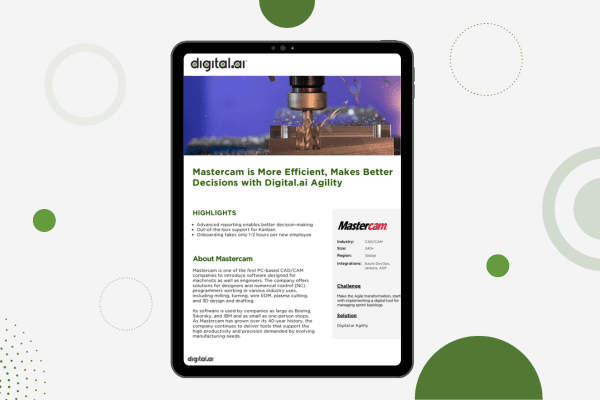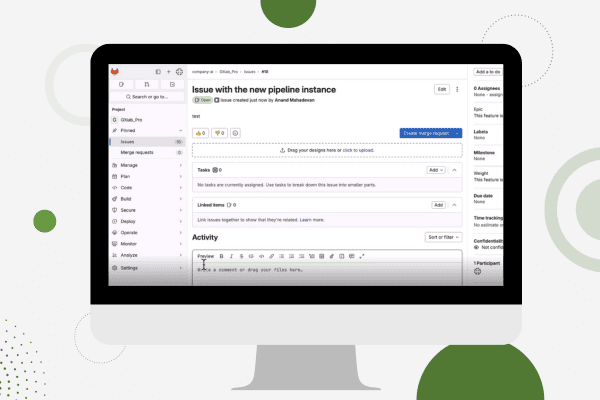What is Scrum Project Management?
Scrum is a proven and widely adopted method for achieving software agility. By working in short sprints, this iterative cycle can be repeated until enough work items have been completed.
Table of Contents
Understanding the value of scrum project management
Scrum is a proven and widely adopted method for achieving software agility. By working in short sprints, this iterative cycle can be repeated until enough work items have been completed, the budget is depleted, or a deadline arrives. Project impetus is maintained, and when the project ends scrum ensures that the most valuable work has been completed.
This contrasts sharply to the more traditional waterfall style approach that fixes the project scope upfront, requiring the extensive creation of requirements, analysis, and design documentation before development can get started. Delays and budget overruns are common, and the failure to prioritize the feature set often results in low quality products that are overloaded with features that the customer/user does not actually require.
How does scrum project management work?
The scrum approach to project management enables software development organizations to prioritize the work that matters most and break it down into manageable chunks. Scrum is about collaborating and communicating both with the people who are doing the work and the people who need the work done. It’s about delivering often and responding to feedback, increasing business value by ensuring that customers get what they actually want.
Shifting from traditional project management approaches to scrum project management requires an adjustment in terms of the activities that are carried out, the artifacts that are created, and the roles within the project team:
Activities in scrum project management
The main activity in scrum project management is the sprint, a time boxed iteration that usually lasts between 1-4 weeks, with the most common sprint length being two weeks.
- Sprint planning meeting: at the start of each sprint, a planning meeting is held to discuss the work that is to be done. The product owner and the team meet to discuss the highest-priority items on the product backlog. Team members figure out how many items they can commit to and then create a sprint backlog, which is a list of the tasks to complete during the sprint.
- Daily scrum or daily standup: each day during the sprint team members share what they worked on the prior day, will work on today, and identify any impediments. Daily scrums serve to synchronize the work of team members as they discuss the work of the sprint. These meetings are time boxed to no more than 15 minutes.
- Sprint review: at the end of a sprint, the team demonstrates the functionality added during the sprint. The goal of this meeting is to get feedback from the product owner and any users or other stakeholders who have been invited to the review.
- Sprint retrospective: at the end of each sprint, the team participates in a retrospective meeting to reflect on the sprint that is ending and identify opportunities to improve in the new sprint.
Artifacts in scrum project management
Scrum project management requires very few artifacts, concentrating instead on delivering software that produces business value. The main artifacts in scrum are:
- Product backlog: this is a complete list of the functionality that remains to be added to the product. The product backlog is prioritized by the product owner so that the team always works on the most valuable features first.
- Sprint backlog: this is a prioritized list of tasks the team needs to complete during the sprint.
- Burndown charts: these are used to show the amount of work remaining in a sprint and provide an effective way to determine at a glance whether a sprint is on schedule to have all planned work finished.
Roles on a scrum team
There are three main roles involved in scrum project management:
- The product owner serves as the customer proxy and is responsible for representing the interests of the stakeholders and ensuring that the product backlog remains prioritized.
- The scrum master is responsible for implementing the scrum. A scrum master differs from a traditional project manager in many key ways, including that the scrum master does not provide day-to-day direction to the team and does not assign tasks to individuals. A key part of this role is to remove impediments or issues that might slow the team down or stop activity that moves the project forward.
- The team is made up of a cross-functional group of 5-9 members who are responsible for developing the product. Scrum teams are self-organized will all members collectively responsible for getting the work done.
What you need to manage a scrum project
Many teams start out using spreadsheets to manage the product backlog and task boards to see and change the state of tasks during the current sprint, often with a whiteboard and sticky notes. This approach tends to work well for small, co-located teams. However, as the backlog increases and remote members require project visibility, many organizations implement a more sophisticated tool to centrally manage projects and enable cross-team collaboration.





